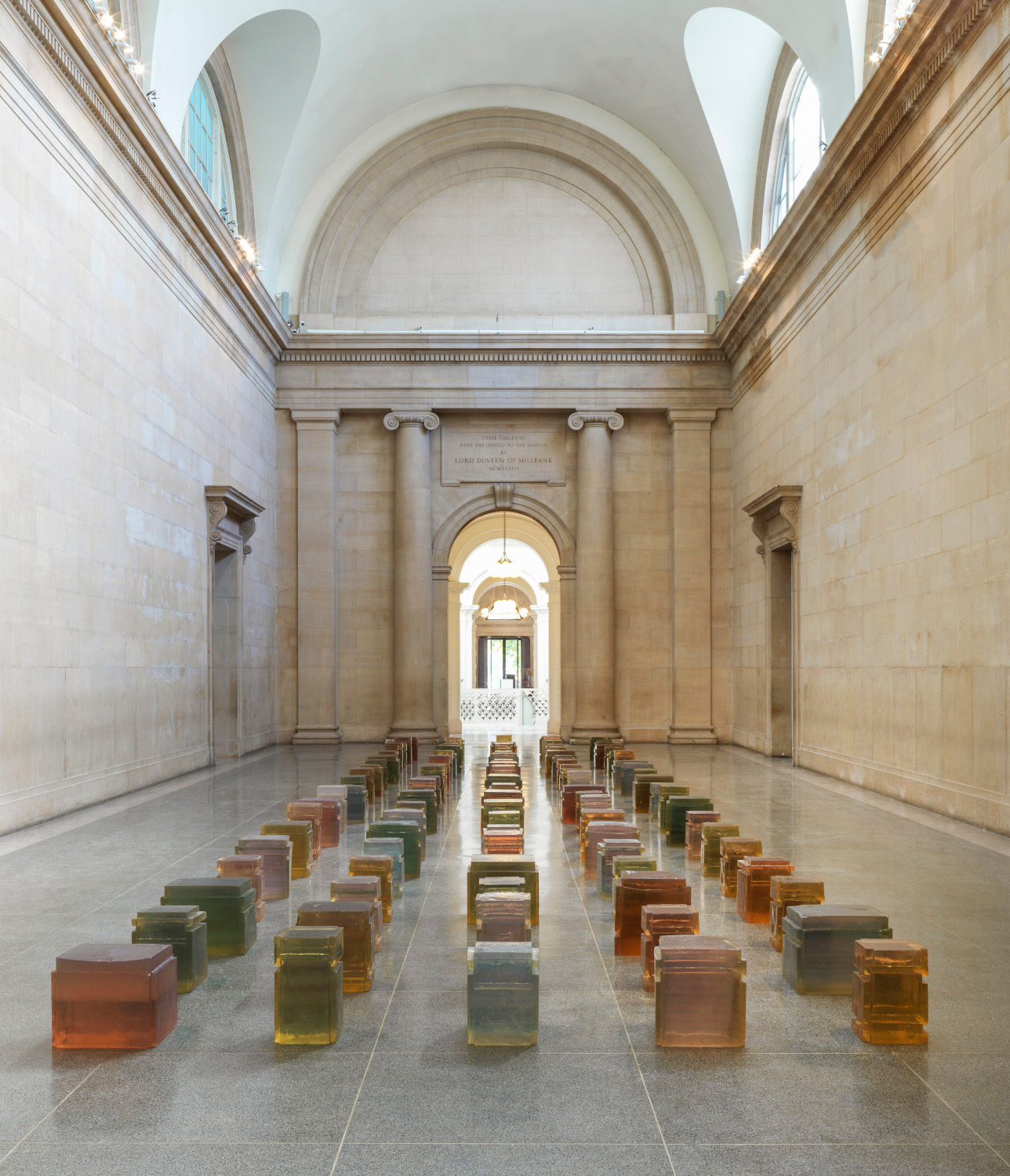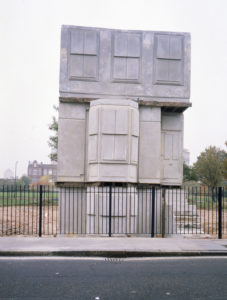Review
Rachel Whiteread, Untitled (One Hundred Spaces), 1995, resin, various dimensions, Pinault Collection, © Rachel Whiteread, © Photo: Tate (Seraphina Neville and Mark Heathcote)
Brilliant proof that nothing beats the physical experience of an artwork, the retrospective dedicated to Rachel Whiteread (born in 1963) at the Tate Britain celebrates an art as delicate as it is powerful, supported by her extraordinary flair for materials (its porosity, softness, translucency, or plasticity), in place of the umpteenth manifestation of austere minimalism that we thought we would be seeing.
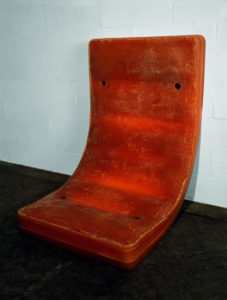
Rachel Whiteread, Untitled (Amber Bed), 1991, rubber, 51 x 36 x 40 cm, Carré d’Art, Musée d’Art Contemporain (Nîmes, France), © Rachel Whiteread, © Photo: Rachel Whiteread
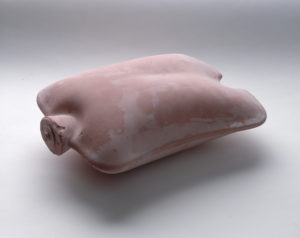
Rachel Whiteread, Untitled (Pink Torso), 1995, pink dental plaster, 10 x 17.5 x 27.5 cm, Courtesy Rachel Whiteread et Gallery Gagosian, © Rachel Whiteread, © Photo: Tate (Seraphina Neville and Mark Heathcote)
The first woman to win the prestigious Turner Prize in 1993,1 Whiteread has explored the possibilities of casting for several decades now – in plaster, resin, rubber, or even concrete – usually used for the reproduction of sculptures. However, turning away from traditional practice, the artist lends this technique the power of revealing the interior volumes of everyday objects and buildings, or in other words, the power of rendering the invisible visible. She thus examines our corporeal relationship to things as banal as a hot water bottle (Untitled [Pink Torso], 1995), a mattress (Untitled [Amber Bed], 1991), an empty room (Untitled [Room 101], 2003), or even an entire house (House, 1993). In addition, she scrutinizes the human imprint on our domestic environment and probes the buried strata of memory, against a backdrop of tension between presence and absence.
Didactically, Tate Britain presents to the public a thematic presentation of the works of Whiteread who, thanks to the choice of curators, finds a unique echo in the architecture of the museum itself. After a liminal section dedicated to public commissions (from which we notably retain House from 1993, an integral and in situ casting of a Victorian house in London’s East End and the images of the very beautiful Holocaust Memorial on Judenplatz in Vienna from 2000) the “Early Works”, “Works on paper”, “Cabins and Papier Mâché”, or “Doors and Windows” sections – some in colourful resin of an irresistible sensuality (Due Porte, 2016) – are articulated around Untitled (Stairs) (2001). Placed in the centre of the main room, this monumental replica of the stairs (the space – the void – overhanging them) of the artist’s domestic stairwell and studio sparks the dual effect of familiarity and disorientation characteristic of her work.
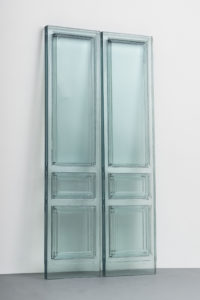
Rachel Whiteread, Due Porte, 2016, resin, 247 x 124 x 8 cm, Galleria Lorcan O’Neill, Rome, © Rachel Whiteread, © Photo: Courtesy Galleria Lorcan O’Neill, Rome
On the way out the visit continues with the selection, undertaken by Whiteread herself, from the Tate’s collection of artworks by Lynda Benglis, Anthony Caro, Richard Dadd, Richard Deacon, Michael Dean, Barry Flanagan, Barbara Hepworth, Sarah Lucas, Robert Morris, and Rebecca Warren. The visit culminates in the imposing Duveen Galleries with a new arrangement of Untitled (One Hundred Spaces) (1995), presenting one hundred casts of the undersides of chairs, arranged in various ways depending on the site of display. Take a word of advice: run to visit this exhibition!
Rachel Whiteread, from 12 September 2017 to 21 January 2018, at the Tate Britain (London, United Kingdom).
The prize is awarded each year to a British artist or an artist working on the British territory.
Camille Viéville, "Rendering the Invisible Visible: Rachel Whiteread in London." In Archives of Women Artists, Research and Exhibitions magazine, . URL : https://awarewomenartists.com/en/magazine/rendre-visible-linvisible-rachel-whiteread-a-londres/. Accessed 27 July 2024
